Hounds in the Spotlight
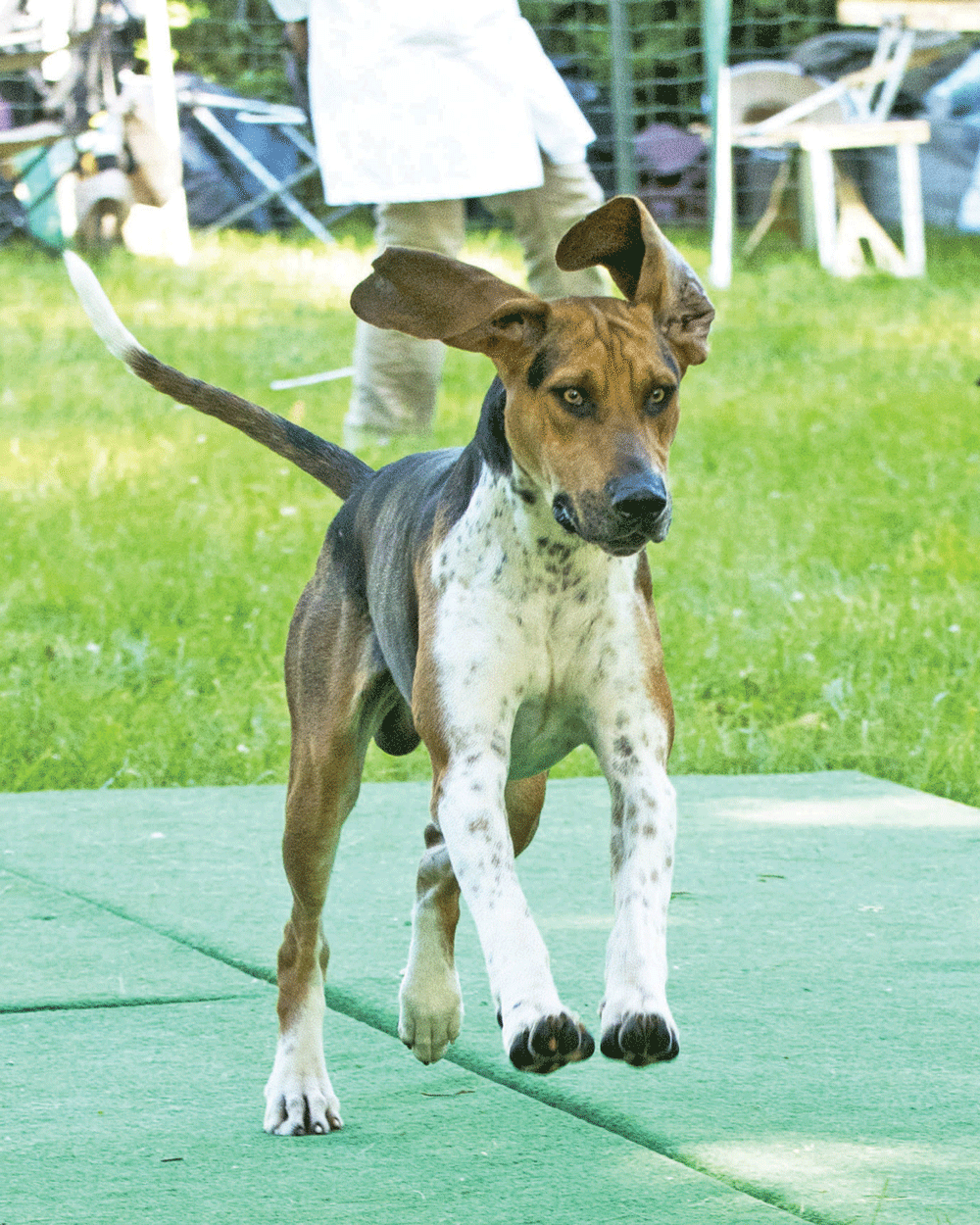
By Erin Bozdan
Photos by Joanne Maisano

Every Memorial Day Weekend brings the history and tradition of the Virginia Foxhound Show to the glorious grounds of Morven Park. Fox hunts from all over North America gather to showcase their particular stamp of foxhound breeding in front of a captive audience of participants and spectators.
Walking onto the grounds you find a sea of white kennel coats, bowler hats, hunt caps and hounds of all types. What is going on in the different rings you might ask? Why are some hounds being presented one way and some another? Some are being stood up, some are bounding across the ring, and others are trotting around in a circle. It is all very impressive, but what does it mean?
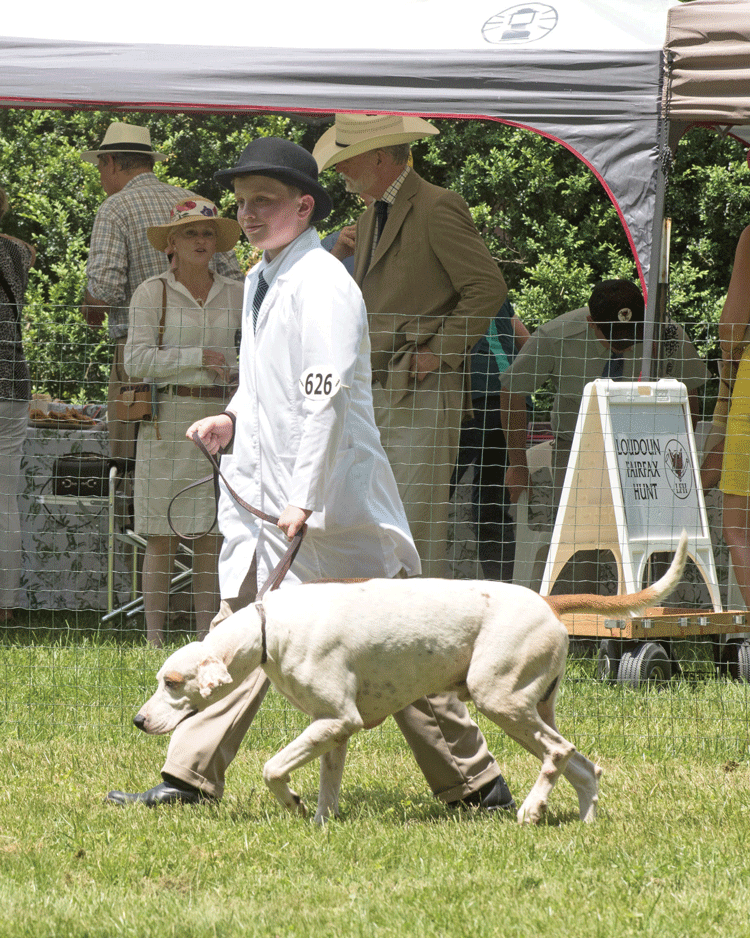
North America, especially Northern Virginia, embodies a vast array of foxhunting clubs. Each hunt has a certain type of foxhound that best suits their specific territory in order to provide them with good sport. Within the different foxhound breeds there are characteristics a huntsman will look for in order to ensure he has the best hound for his hunt country. This may be an English, American, Penn-Marydel or Crossbred hound, or any combination of those. At the VFH show you can find the best of the best of each of these breeds.
At the end of the weekend the champions and grand champions will be showcased for their achievements in each of their respective classes. Judges carefully evaluate each hound looking for any distinct advantage or trait one might have over another.
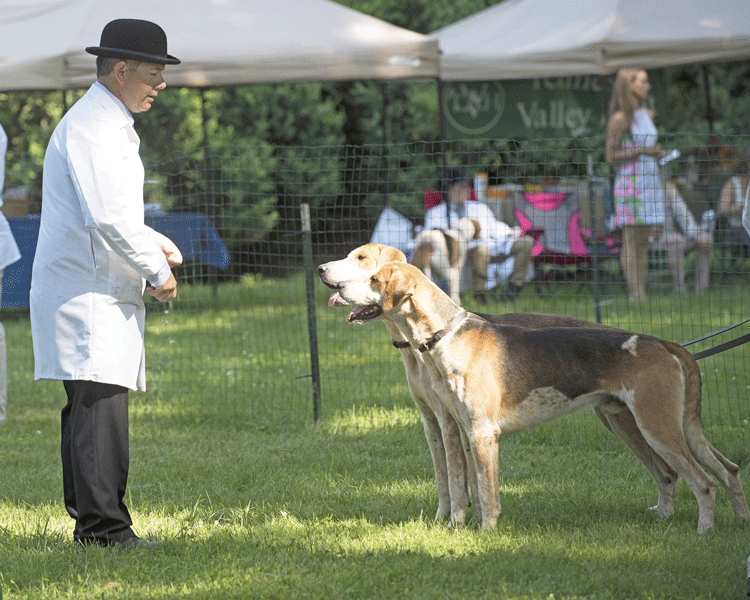
Conformation, which is the evaluation of the physical characteristics of an animal, is an integral part of each type and class. Freedom of movement is the next quality, which is directly related to good conformation. In the words of Andy Bozdan, former huntsman for the Loudoun Fairfax Hunt, “a hound that is put together correctly is far more likely to hold up to the tasks at hand on a day’s hunting.” Key attributes include a nice looking head, correct shoulder slope, straight front legs, tight feet and low hocks.
“This isn’t just a beauty competition. The hound must show itself in order for a judge to observe its conformation. A hound can be very well put together but lack confidence once it enters the ring. For this reason alone a hound could be excused,” informs Bozdan.
On the other hand, Bozdan explains, “There are some hounds that would never win a single ribbon at the show, but they may be the best hunting hound a huntsman could ask for.”
As you pass down the long line of show rings there will be a few noticeable differences that may stand out. In the American and Crossbred rings the hounds are being shown “bench style.” The handler will be kneeling down, with their hand on each end of the hound, ensuring the hound is perfect from nose to tail.
The American hound dates back to 1650, when the breed was first developed by Robert Brooke. Long leg, fine bone and a slightly arched loin, will be some of what a judge is looking for in this class.
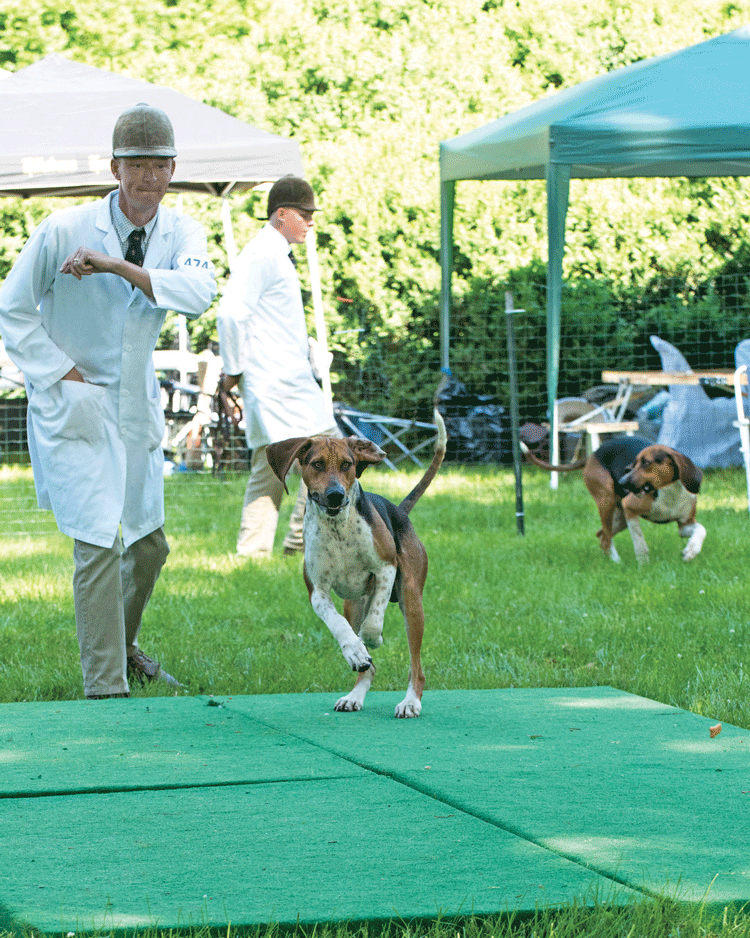
Interestingly, when the show first took place in 1934, only American hounds were permitted. It wasn’t until 1965 that English and Crossbred hounds came onto the scene.
A type of American hound, the Penn-Marydel, originates from two types of hounds. The old Southern hounds from England and the black and white hound from France, otherwise known as the “Blanc Noire.” In the 17th century, these hounds predominately hunted in three states: Pennsylvania, Maryland and Delaware. Over time they became known as Penn-Marydel.
Ryan Johnsey, master hunstman for the Tennessee Valley hounds, hunts a lovely pack of Penn-Marydels down South. When asked what qualities he thinks are most important when selecting which hounds he will show, Ryan states, “Correctness in their feet and knees are my biggest concerns. I feel like folks overlook this too often in their breeding. If they don’t have sound conformation, how will they ever hold up out hunting?”
These hounds are best known for two beloved qualities: their remarkable scenting ability, allowing them to pick up a line (that is the scent of fox or coyote) even in tough conditions; and, their booming, bellowing voice. Hearing a pack of Penn-Marydels in full cry is a bone-chilling experience that will leave a mark on your soul.
In the English ring, hounds will be shown on and off lead as well as free running. This is a lovely display of the hounds’ athleticism as they gallop across the green grass chasing after a dog biscuit. It’s a marvelously fun game for them and also gives the judges a chance to really see how they can move.
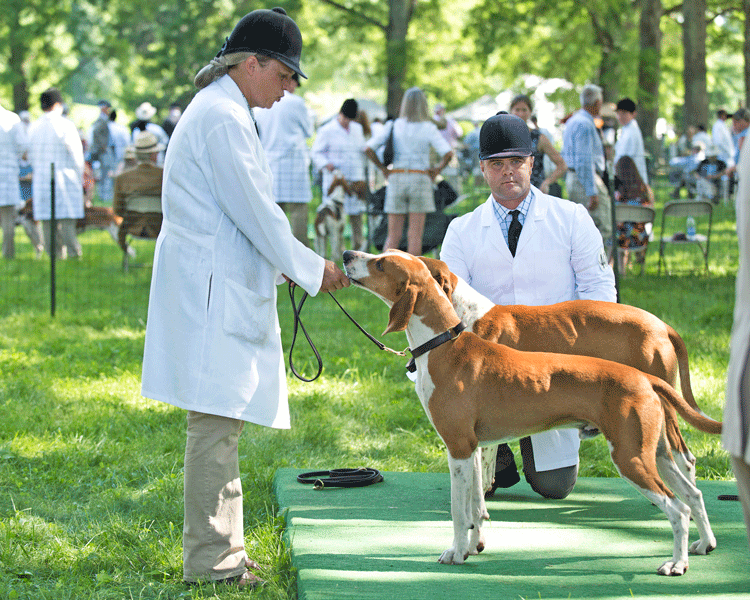
shown bench style.
There are actually two types of English hounds shown here that will be judged as “English” and compete in the same ring, though they have been bred to be very different from each other to suit the needs of their particular hunt territories. The Modern English hound is more streamlined and athletic so that it can cover miles of territory and clear any obstacle in its way, such as the wire fences common in North America. The Old English hound is typically stockier and bigger boned, making it hard driving and determined, and is the predominant hound in Ireland.
Graham Buston, huntsman at Blue Ridge Hunt, has both English types in his pack as well as Crossbreds. He recognized the need for a different type of hound for his territory and successfully developed a cross between the English Fell hound and Penn-Marydel. He finds this combination performs optimally in his hunt’s challenging terrain, which can be tough due to the prevalent amount of limestone.
Graham says, “I have had days where I saw the English hounds shut down where the Fell cross persevered to keep the fox going.” The Fell, after all, were originally bred to hunt mountainous territory, and for this reason they are “more tough and independent, which suits me as a huntsman,” states Graham.
Some hounds at the show will be veterans, having attended the show in previous years. Called entered hounds, they have their own class. Entered hounds must have been hunting with their pack for at least one season. Young puppies also attend the show in a class called “unentered,” meaning they have yet to start their formal hunting careers. “Young entry,” as they are called, will have been practicing their moves in advance of the show to prepare for their upcoming debut.
One of the highlights of the day is the junior handler’s class. Children dressed in kennel coats that are too big and hunt caps falling down over their eyes jog around the ring with their hounds. They take it very seriously, as they should, and in the end ribbons are awarded.
“Do something that others are not doing; and, whatever you do, do it correctly,” responded Evan Dombrosky, winner of the 2015 and 2016 junior handler class, when asked what tricks he had up his sleeve. The junior handler class is a joy to watch and a wonderful glimpse into the future of foxhunting.
Whether it’s your first time at the show or you’re an old pro, one thing is for sure. The Virginia Hound Show is an experience that will leave you with a bit of history, an appreciation for hound breeding, and a new or even deeper-rooted appreciation for the sport of foxhunting. ML


